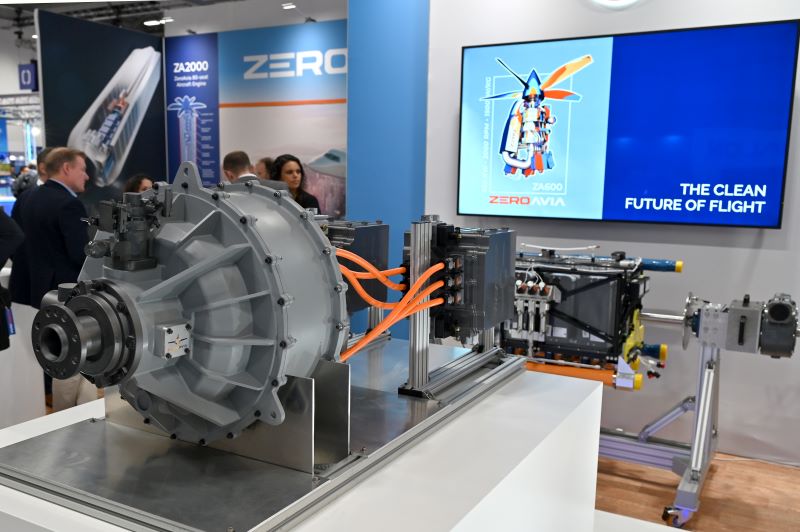ZeroAvia's Path to Hydrogen-Electric Aviation at Farnborough Airshow 2024
Key Ideas
- ZeroAvia is working on an interim hydrogen-electric concept to power narrowbody airframes, aiming for market introduction by 2030.
- The company's partnership with Airbus could potentially see their technology integrated into the ZEROe concept aircraft by 2035.
- ZeroAvia is exploring a hybrid engine solution that combines a gas turbine engine with electric drive and hydrogen fuel cells for more efficient flight.
- The ZA600 engine for smaller commercial turboprops is set for certification in 2025, with larger turboprop engines and regional jet variants planned for the future.
ZeroAvia, a powertrain developer funded by Airbus, is working on advancing hydrogen-electric propulsion for aircraft. At the Farnborough International Airshow 2024, they showcased their ZA600 engine and discussed plans to power 100- to 200-seat aircraft with their ZA10000 powertrains by 2030. The company aims to cut climate impact significantly compared to traditional kerosene-powered flight. ZeroAvia is considering an interim solution that combines a gas turbine engine with electric drive and hydrogen fuel cells to achieve a more efficient flight performance, potentially bringing the timeline for hydrogen-electric narrowbodies to 2030-2032. This hybrid engine configuration would allow for take-off power generation with the gas turbine and cruise power with the fuel cells, albeit with possible payload-range penalties. The company is also working on certifying the ZA600 engine for smaller turboprops, with plans for larger turboprop engines and regional jet variants. Collaborations with Airbus and Mitsubishi's regional jet division are part of ZeroAvia's strategy to revolutionize aviation with sustainable hydrogen-electric technology.
